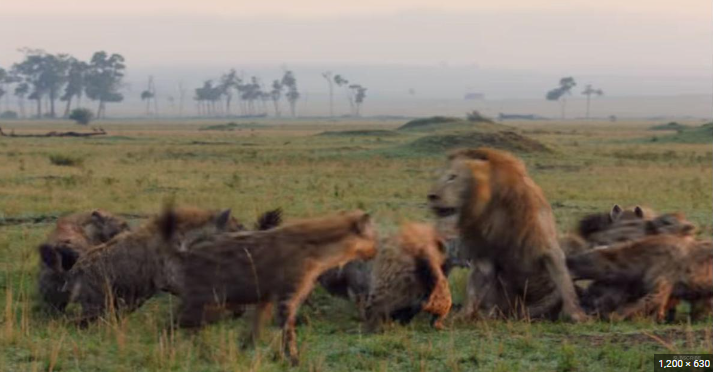Predatory competition
Lions and Spotted Hyenas: A Complex Relationship in the Wild
Introduction
In the vast African wilderness, lions and spotted hyenas share a similar ecological niche and often find themselves in direct competition for prey and carrion. This article delves into the intricate dynamics between these two apex predators, exploring their interactions, territorial disputes, and the impact they have on each other's populations.
Competition for Food
Studies reveal that lions and hyenas exhibit a dietary overlap of 58.6%, indicating a significant competition for resources. Lions generally ignore hyenas unless they are on a kill or are being harassed, while hyenas visibly react to the presence of lions, with or without the presence of food. In certain regions, such as the Ngorongoro Crater, lions heavily rely on stolen kills from hyenas, leading to an increase in their kill rate. However, in Botswana's Chobe National Park, hyenas frequently challenge lions, stealing their kills in 63% of all lion hunting attempts. When confronted on a kill, hyenas may either leave or wait patiently at a distance until the lions have finished. The two species engage in aggressive interactions, even in the absence of food, with lions accounting for a significant number of hyena deaths in some areas. Hyenas have adapted by mobbing lions that enter their territories, displaying a complex interplay of competition and survival strategies.
 |
| Lion attacked by spotted hyenas in Sabi Sand Game Reserve |
Interactions with Other Predators
Lions exert dominance over cheetahs and leopards, often stealing their kills and targeting their cubs and even adults when given the chance. Cheetahs frequently lose their hard-earned kills to lions or other predators, significantly impacting their survival and foraging success. A study in the Serengeti ecosystem revealed that lions were responsible for killing at least 17 out of 125 cheetah cubs born during a specific period. To avoid direct competition, cheetahs adjust their hunting times and habitats. Leopards, on the other hand, seek refuge in trees, but lionesses occasionally attempt to climb and retrieve their kills, adding another layer of competition between these big cats.
Lioness stealing a kill from a leopard in Kruger National Park
Lions also dominate African wild dogs, scavenging their kills and targeting their pups or adult members. Areas with higher lion populations tend to have lower wild dog densities, reflecting the lion's dominance. However, there are isolated cases of old or injured lions falling victim to wild dog attacks, highlighting the complexity of predator-prey relationships. Additionally, Nile crocodiles have been known to prey on lions, as evidenced by the occasional discovery of lion claws in crocodile stomachs, demonstrating the diverse range of threats faced by lions in their environment.
Conclusion
The interactions between lions and spotted hyenas, as well as their relationships with other predators, are shaped by competition for resources and territorial disputes. Understanding these dynamics is essential for comprehending the intricate balance of ecosystems and the conservation of these iconic species. As we continue to study and appreciate these majestic creatures, it becomes increasingly clear that their coexistence is a delicate dance of survival, where each predator plays a vital role in shaping the complex web of life in the African wilderness.







0 Comments